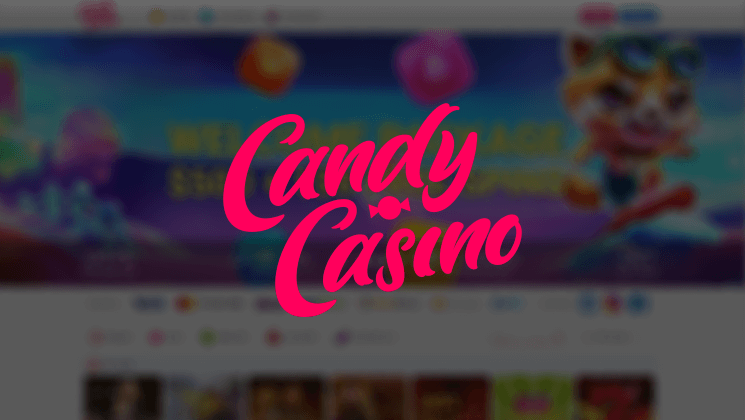
Imagine stepping into a world where neon lollipops light the way, chandeliers drip with crystalized sugar, and the air hums with upbeat tunes that blend carnival energy and modern electronic beats. A big candy casino is more than a simple theme grafted onto slot machines; it is a full sensory experience designed to transport players into a confectionery fantasy while offering the familiar thrills of gambling and social gaming. This article examines the elements that make such venues memorable, how they balance spectacle and playability, and the considerations players and operators should keep in mind.
At the core of a candy-themed casino is design. Visual identity matters: bright color palettes, playful iconography, and soft, rounded typography create a welcoming atmosphere. Designers often borrow from vintage candy-shop aesthetics—striped awnings, glass jars of sweets, oversized candy props—while integrating contemporary digital displays and immersive lighting. Soundscapes are equally important; sound designers craft loops that are catchy but not oppressive, punctuated by satisfying chimes and victory jingles that reward small wins. The goal is to create a space that feels indulgent but safe, where players can momentarily escape the routine of daily life.
Game design in a big candy casino tends to lean into whimsical motifs and approachable mechanics. Candy-themed slots are a staple, featuring reels decorated with bonbons, gummy bears, and spinning lollipops that trigger cascades or sticky wilds. Developers use animation and animation pacing to maintain excitement—cascade effects, multisymbol explosions, and gradually enlarging win meters all amplify the psychological reward. Table games and live dealer rooms may adopt subtler thematic touches: pastel-playing cards, sugar-crystal chips, or dealers in fun costumes—features that enhance novelty without compromising gameplay integrity.

Beyond aesthetics, the social dynamics of a big candy casino are a major draw. Modern venues—both land-based and online—prioritize social connectivity. Communal spaces, chat-enabled platforms, and cooperative slots let players share wins, cheer one another on, and participate in community challenges. Seasonal events and limited-time promotions based on flavors, candy holidays, or fictional candy kingdoms create a rhythm that keeps regulars coming back. For many players, the social aspect transforms gameplay from solitary risk-taking into shared entertainment.
Monetization strategies are often layered. Free-to-play experiences, in-browser games, and demo modes serve as entry points, while paid spins, in-game boosters, and VIP packages drive revenue. Operators use loyalty programs, tiered rewards, and collectible items (digital candies, badges, or themed avatars) to encourage repeat engagement. Transparency and fairness are vital—clear odds, visible payout tables, and reputable licensing help build trust. For online candy casinos, reliable random number generation, audited payout percentages, and secure transactions are non-negotiable components of a sustainable business.
Responsible play should be front and center in any discussion of themed casinos. The playful aesthetic of candy can make a gambling environment feel more like a game and less like a financial risk. Operators need to counteract potential normalization of excessive play by providing visible responsible-gambling tools: deposit limits, cooling-off periods, self-exclusion options, and easy access to support resources. Educational messaging that doesn’t dampen the fun but emphasizes safety helps protect vulnerable players, including younger visitors who might be attracted to the childlike visuals.
Regulation and compliance vary by jurisdiction, but candy-themed venues are held to the same standards as any other operator. Licensing, age verification, anti-money-laundering protocols, and fair-play audits are essential. For brick-and-mortar locations, physical safety, clear signage, and staff training on problem-gambling recognition are necessary. For online operators, robust identity checks and secure payment processing must be balanced with smooth user experiences. Operators who prioritize compliance and player protection often enjoy longer-term loyalty and better reputations.

Marketing a big candy casino requires a delicate balance between whimsy and credibility. Campaigns that lean into storytelling—maps of candy realms, character mascots, or episodic in-game adventures—can generate buzz. Influencer partnerships, immersive pop-up events, and limited-time “flavor drops” (special game releases and themed giveaways) create scarcity and excitement. Yet marketing must also be responsible: clear terms, honest odds, and avoidance of messaging that glamorizes gambling without acknowledging risks.
The cultural impact of candy-themed casinos is intriguing. They tap into nostalgia while updating classic carnival motifs for digital-age audiences. For some, these venues add an accessible, charming alternative to more austere casinos; for others, the blending of childlike imagery with real-money gambling raises ethical questions. Designers and operators who engage with these concerns—by emphasizing adult-targeted aesthetics, placing parental warnings, and supporting responsible-gambling initiatives—can help mitigate controversy while preserving the theme’s appeal.
What should visitors expect when they walk into or log onto a big candy casino? Expect immersive visuals, upbeat soundtracks, and mechanics that reward small, frequent feedback. Expect community-driven features and seasonal changes that keep the environment feeling fresh. Also expect the need for personal discipline: set budgets, use built-in controls, and treat the experience as entertainment rather than a money-making strategy. For those curious about the genre, demo modes and free trials are excellent ways to sample the experience without financial risk.
In conclusion, a big candy casino represents a fusion of theatrical design and modern gaming mechanics. When executed thoughtfully, it offers a unique, joyful take on the casino experience that appeals to players seeking novelty and community. Success hinges on balancing aesthetics with transparency and protecting players through responsible design and clear regulation. The sweetest part of the concept is its ability to conjure delight—when that delight is delivered ethically and sustainably, both players and operators can enjoy a long-lasting, mutually rewarding relationship.